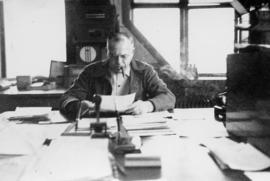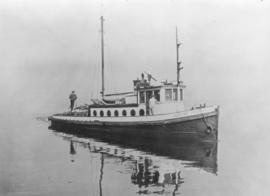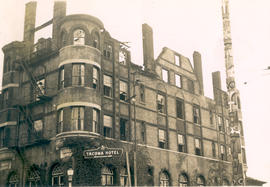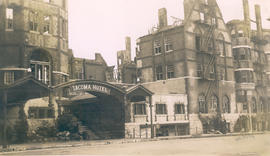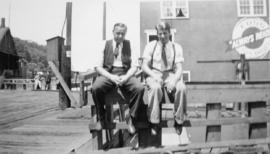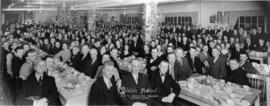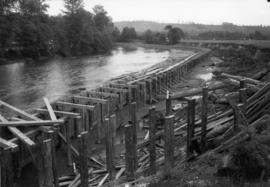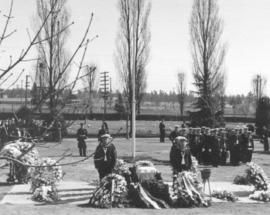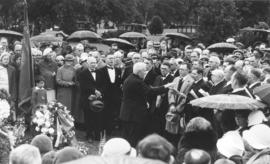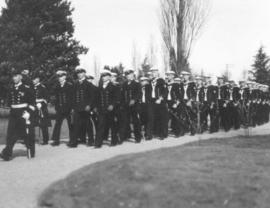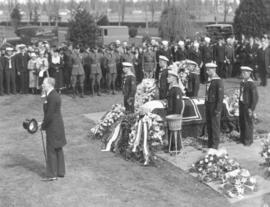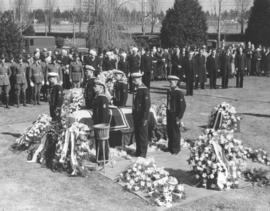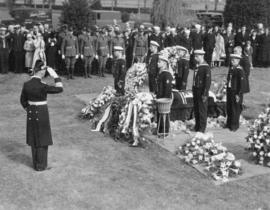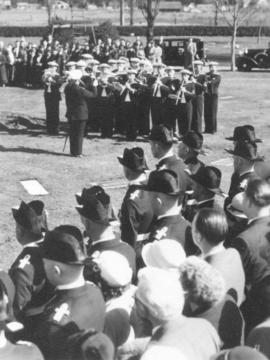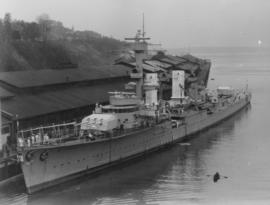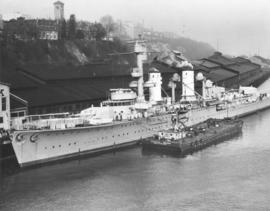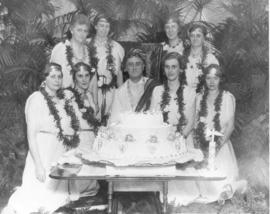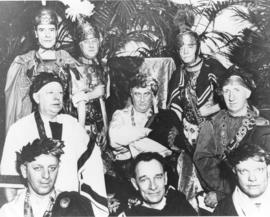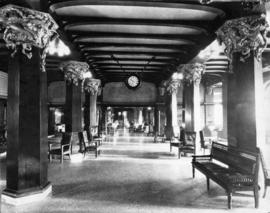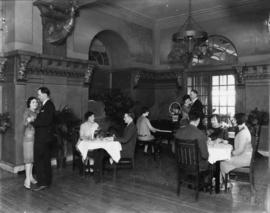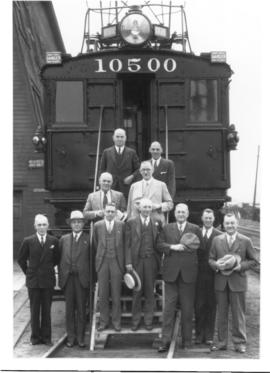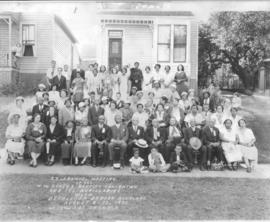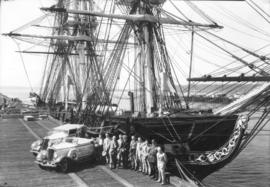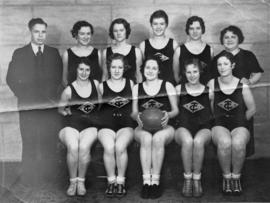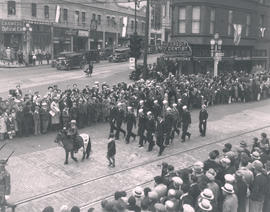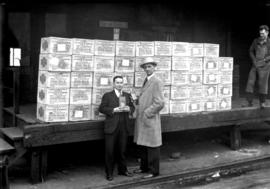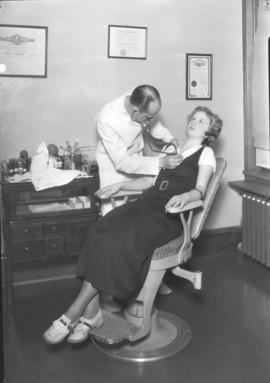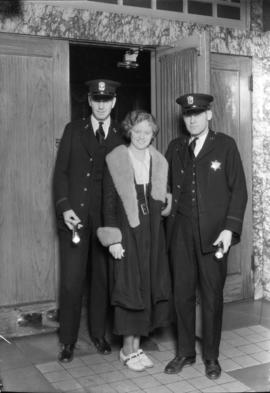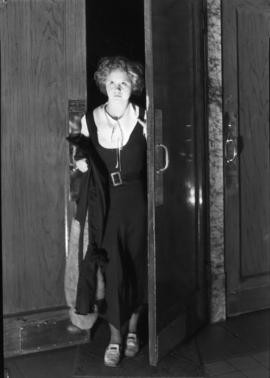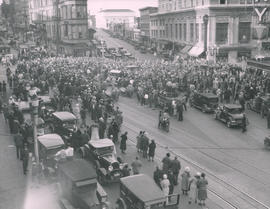- Item
- 1935
Part of General Photograph Collection
ca. 1935. William T. Case hard at work at his desk at the Foss Launch & Tug Co.'s floating office at 400 Dock St. In November of 1932, the original Foss offices at this location caught fire. Mr. Case discovered the fire and helped escort out the 20 people asleep on the premises, saving their lives. The Foss family scouted about for a viable substitute for their destroyed building. They found the first seaplane hangar in the Northwest on sale in Seattle. The huge building floated on a scow and was used by Eddie Hubbard, pioneer aviator, to house his hydroplane on Lake Union. It was purchased, towed to Tacoma and remodeled. The main deck contained the repair shop for tugs and the store for needed provisions. The second deck contained offices, bunk rooms, an apartment for Mr. Case and his family, a recreation room and company accountant Oscar Iverson's rooms. Heavy winds could cause the building to rock and more than once big freighters in the waterway came a little too close. (TNT 10/9/1935)
Case, William T.; Foss Launch & Tug Co. (Tacoma);
